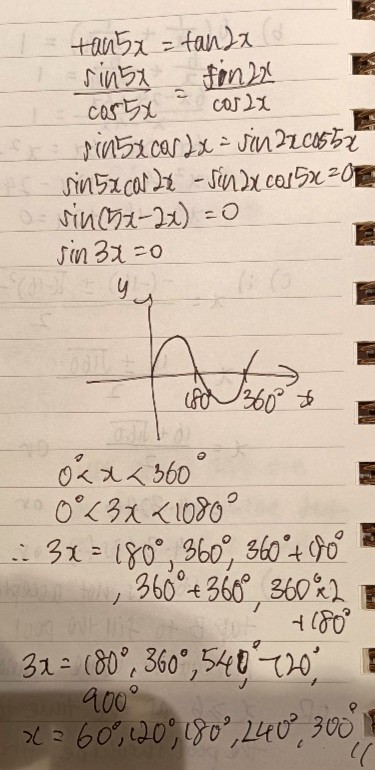
 360 Tutoring Program
360 Tutoring Program
*If you qualify, the Free 360 Tutoring Program will be extended to you at no extra charge.
On top of the tutor you are getting, ManyTutors will provide unlimited free tutors to help you with any questions you may have for other subjects. Just snap a photo of your homework, post, and someone will provide the solution for free.
You will get a complimentary premium account on Ask ManyTutors that allows you to ask English, Chinese, Malay, Math, Science, Geography and History homework questions free of charge.
Under the 360 Program, the tutor will receive a different rate from what you are paying to ManyTutors.


tan 5x = tan 2x
tan 5x - tan 2x = 0
Then we divide both sides by (1 + tan 5x tan 2x). Since tan 5x = tan 2x, the value of tan 5x tan 2x will be at least zero, so we won’t run into zero denominator issues.
The left-hand side will look very much like the tangent addition formula!
tan (5x - 2x) = 0
tan 3x = 0
And you can follow the tutor’s workings afterwards.
Sine, cosine and tangent are actually length ratio operators in triangles and should not be treated as algebraic.
In particular, we cannot, for example, say that sin (A + B) = sin A + sin B, in contrast with expressions such as k (A + B) = kA + kB.
When you learnt sine, for example, it was defined as the trigonometric ratio of the length of an opposite side to the hypotenuse side of a triangle with respect to a particular angle chosen.
Most people would have forgotten about this “ratio” word in trigonometry and some people would then accordingly make the error of “expanding” or “factorising” such expressions.
Logarithmic expressions are also similar; they are another type of operator altogether and in a similar way, log (A + B) is not equivalent to log A + log B in general.